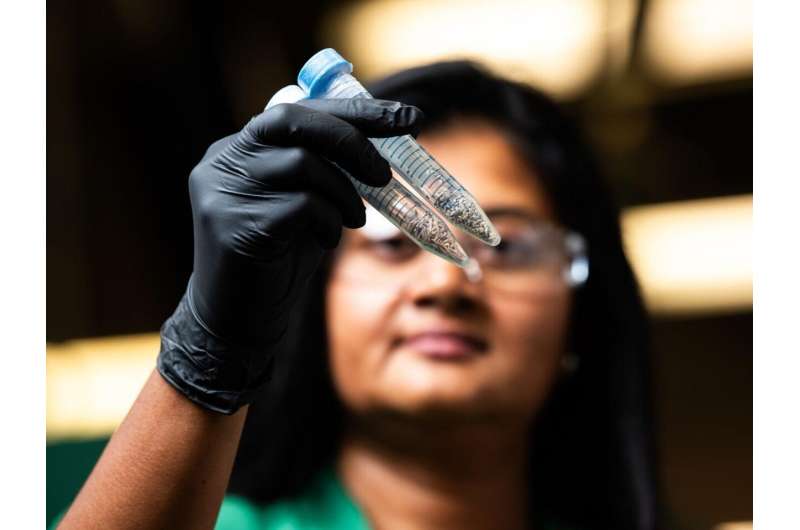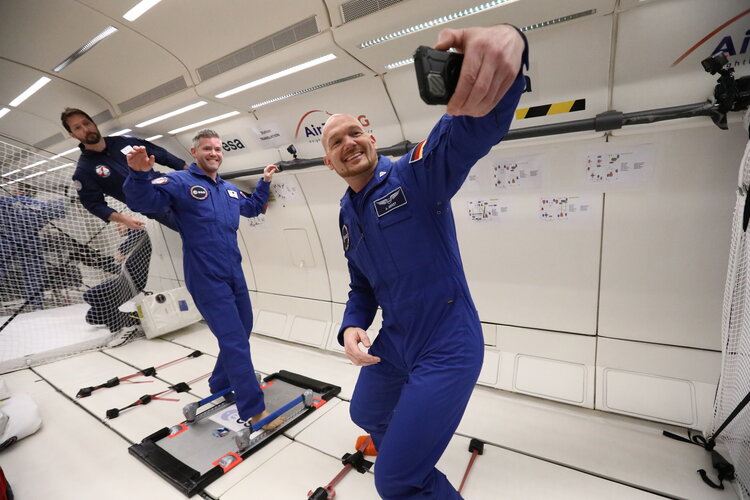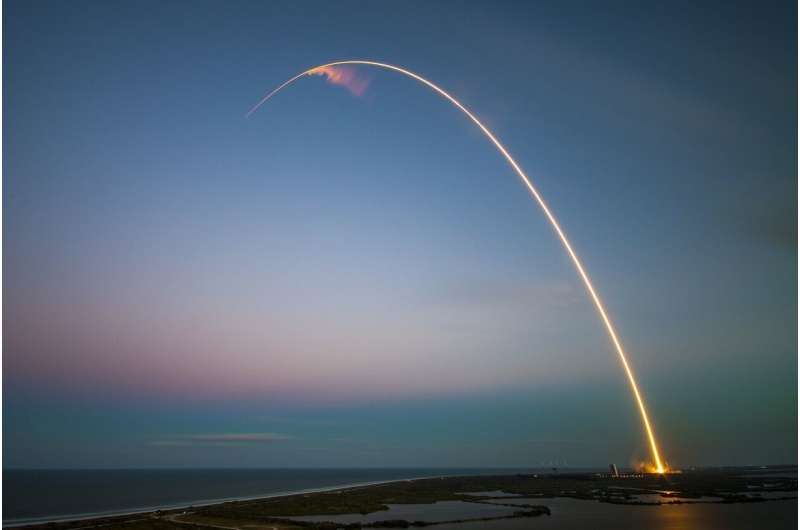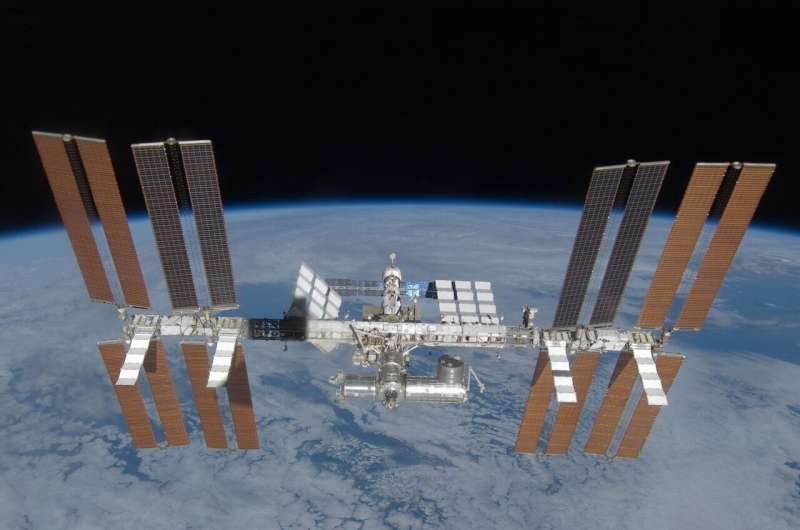Northrop Grumman completes PDR for SDA Data Transport Satellites
Friday, 02 August 2024 16:52 Northrop Grumman Corporation (NYSE: NOC) has successfully completed the Preliminary Design Review (PDR) for 74 high-speed data transport satellites for the Space Development Agency (SDA). These satellites, which incorporate advanced technology from the earlier Proliferated Warfighter Space Architecture (PWSA), will enhance capabilities for U.S. Forces.
The 74 satellites include both Tranch
Northrop Grumman Corporation (NYSE: NOC) has successfully completed the Preliminary Design Review (PDR) for 74 high-speed data transport satellites for the Space Development Agency (SDA). These satellites, which incorporate advanced technology from the earlier Proliferated Warfighter Space Architecture (PWSA), will enhance capabilities for U.S. Forces.
The 74 satellites include both Tranch Researchers Launch Underwater Study of Greenland's Glaciers
Friday, 02 August 2024 16:52 The University of Texas at Austin has initiated an expedition to explore the underwater boundaries of Greenland's coastal glaciers to gain insights into future sea level rise.
The four-week international expedition will study the mechanisms controlling the melting of these massive glaciers, which hold about 23 feet (7 meters) of potential sea level rise within their ice.
Accompanying
The University of Texas at Austin has initiated an expedition to explore the underwater boundaries of Greenland's coastal glaciers to gain insights into future sea level rise.
The four-week international expedition will study the mechanisms controlling the melting of these massive glaciers, which hold about 23 feet (7 meters) of potential sea level rise within their ice.
Accompanying DARPA Launches Initiative for Next-Gen US Microelectronics Manufacturing
Friday, 02 August 2024 16:52 The Next-Generation Microelectronics Manufacturing (NGMM) program is set to revolutionize U.S. microelectronics production through a new agreement to establish the first national center dedicated to advancing domestic microelectronics manufacturing.
DARPA is collaborating with the University of Texas at Austin and its Texas Institute for Electronics research center to form a consortium sup
The Next-Generation Microelectronics Manufacturing (NGMM) program is set to revolutionize U.S. microelectronics production through a new agreement to establish the first national center dedicated to advancing domestic microelectronics manufacturing.
DARPA is collaborating with the University of Texas at Austin and its Texas Institute for Electronics research center to form a consortium sup Mesoscale Discoveries in Ferroelectric Materials Could Revolutionize Electronics
Friday, 02 August 2024 16:52 In electronic technologies, critical material properties change in response to stimuli like voltage or current. Scientists strive to understand these changes at various scales, from the nanoscale to the microscale. However, the often-overlooked mesoscale - spanning 10 billionths to 1 millionth of a meter - is now coming into focus.
Researchers at the U.S. Department of Energy's (DOE) Argon
In electronic technologies, critical material properties change in response to stimuli like voltage or current. Scientists strive to understand these changes at various scales, from the nanoscale to the microscale. However, the often-overlooked mesoscale - spanning 10 billionths to 1 millionth of a meter - is now coming into focus.
Researchers at the U.S. Department of Energy's (DOE) Argon New catalyst developed from nanoscale cubes
Friday, 02 August 2024 16:52 Researchers from Tokyo Metropolitan University have created innovative sheets of transition metal chalcogenide "cubes" linked by chlorine atoms. Unlike the widely studied atom-based sheets such as graphene, the team's research introduces the novel use of clusters. They successfully formed nanoribbons within carbon nanotubes for structural analysis and also created microscale sheets of cubes, whi
Researchers from Tokyo Metropolitan University have created innovative sheets of transition metal chalcogenide "cubes" linked by chlorine atoms. Unlike the widely studied atom-based sheets such as graphene, the team's research introduces the novel use of clusters. They successfully formed nanoribbons within carbon nanotubes for structural analysis and also created microscale sheets of cubes, whi Experiment on photosynthesis is heading to the space station to explore effects of microgravity
Friday, 02 August 2024 14:20
An experiment aimed at learning more about how plants grow in space will be aboard a National Aeronautics and Space Administration launch in early August from the Cape Canaveral Space Force Station in Florida.
A Northrop Grumman Cygnus spacecraft perched atop a SpaceX Falcon 9 rocket will carry the plants to the orbiting laboratory, where astronauts will tend to them before the plants are returned to Earth.
The experiment created by scientists at the Department of Energy's Pacific Northwest National Laboratory will look at how two different types of grass grow on the space station. A PNNL team led by biologist Pubudu Handakumbura designed the experiment and will compare the results from space to identical plants being grown at the Kennedy Space Center.
Week in images: 29 July - 02 August 2024
Friday, 02 August 2024 12:10
Week in images: 29 July - 02 August 2024
Discover our week through the lens
SpaceX lines up next 2 Space Coast launches on Friday and Saturday
Friday, 02 August 2024 12:00
SpaceX shot up three Falcon 9 rockets from three launch pads last weekend once the Federal Aviation Administration gave its grounded rocket the OK to return to flight. Now it's set to go another round.
First up is a Falcon 9 launch of 23 more Starlink satellites from Kennedy Space Center's Launch Pad 39-A during a four-hour window that opens at 12:19 a.m. Eastern Time August 2. Backup options fall to early August 3 starting at 12:19 a.m.
Space Launch Delta 45's weather squadron forecasts a 95% chance of favorable conditions, which drops to 80% in the event of a 24-hour delay.
The first-stage booster for the mission is making its 12th flight and will attempt a recovery landing downrange in the Atlantic Ocean on board the droneship A Shortfall of Gravitas.
The launch would be the 54th from the Space Coast for the year and 50th for SpaceX with United Launch Alliance responsible for the other four.
SpaceX's record pace was slowed for a couple of weeks in July after an issue with the Falcon 9's upper stage during a launch from California that was tracked to a liquid oxygen leak blamed on a sense line connected to a supply tank.
NASA pushes Boeing Starliner return meeting to at least next week
Friday, 02 August 2024 11:50
Despite NASA officials last week stating a return readiness review might happen this week for Boeing's Starliner, teams instead continue to go over data for the spacecraft before any decision on its departure from the International Space Station.
NASA astronauts Butch Wilmore and Suni Williams await the decision of whether or not they will be able to climb back aboard the spacecraft for its return to Earth to complete the Crew Flight Test mission. That readiness review was pushed to next week at the earliest, according to an update from NASA.
The duo launched aboard Starliner atop a United Launch Alliance Atlas V rocket from Cape Canaveral Space Force Station back on June 5 for what was originally planned to be about an eight-day mission to the ISS. On their way to a June 6 docking, though, the spacecraft suffered failures on five of its 28 reaction control thrusters as well as several helium leaks in the service module that houses the thrusters.
NASA and Boeing decided to perform ground tests on a similar thruster to mimic conditions on the flight up and what the thrusters would face on the way back down to Earth as well as using a former service module that was never launched to figure out the likely reason behind the helium leaks.
NASA and Boeing Progress on Crew Flight Test Data Evaluation
Friday, 02 August 2024 11:43 "NASA and Boeing teams continue analyzing data from recent ground and spacecraft testing as they evaluate the Starliner spacecraft's propulsion system during NASA's Boeing Crew Flight Test mission."
Teams are taking their time to analyze the results of recent docked hot-fire testing, finalize flight rationale for the spacecraft's integrated propulsion system, and confirm system reliability
"NASA and Boeing teams continue analyzing data from recent ground and spacecraft testing as they evaluate the Starliner spacecraft's propulsion system during NASA's Boeing Crew Flight Test mission."
Teams are taking their time to analyze the results of recent docked hot-fire testing, finalize flight rationale for the spacecraft's integrated propulsion system, and confirm system reliability Graphene Discovered in Lunar Soil Sample from Chang'e 5 Mission
Friday, 02 August 2024 11:43 A recent study published in National Science Review has identified the presence of naturally formed few-layer graphene in a lunar soil sample. This remarkable finding comes from a team of researchers led by Professors Meng Zou, Wei Zhang, and Senior Engineer Xiujuan Li from Jilin University, along with Wencai Ren from the Chinese Academy of Sciences' Institute of Metal Research. The sample, an o
A recent study published in National Science Review has identified the presence of naturally formed few-layer graphene in a lunar soil sample. This remarkable finding comes from a team of researchers led by Professors Meng Zou, Wei Zhang, and Senior Engineer Xiujuan Li from Jilin University, along with Wencai Ren from the Chinese Academy of Sciences' Institute of Metal Research. The sample, an o Key Insights into Rapid Formation of Giant Planets
Friday, 02 August 2024 11:43 A team of researchers at LMU has developed a novel model that explains the formation of giant planets like Jupiter. This model provides deeper insights into planetary formation processes and may broaden our understanding of planetary systems. Our solar system is familiar: the Sun at the center; rocky planets Mercury, Venus, Earth, and Mars; the asteroid belt; gas giants Jupiter and Saturn; ice g
A team of researchers at LMU has developed a novel model that explains the formation of giant planets like Jupiter. This model provides deeper insights into planetary formation processes and may broaden our understanding of planetary systems. Our solar system is familiar: the Sun at the center; rocky planets Mercury, Venus, Earth, and Mars; the asteroid belt; gas giants Jupiter and Saturn; ice g Euclid Invites Public to Help Classify Galaxy Shapes
Friday, 02 August 2024 11:43 Euclid, the mission dedicated to mapping the Universe, is set to capture images of hundreds of thousands of distant galaxies. In November 2023 and May 2024, Euclid revealed its first high-quality images, showcasing a wide array of cosmic features, from nearby nebulas to distant galaxy clusters. Each image includes numerous distant galaxies in the background.
Over the next six years, Euclid
Euclid, the mission dedicated to mapping the Universe, is set to capture images of hundreds of thousands of distant galaxies. In November 2023 and May 2024, Euclid revealed its first high-quality images, showcasing a wide array of cosmic features, from nearby nebulas to distant galaxy clusters. Each image includes numerous distant galaxies in the background.
Over the next six years, Euclid 



